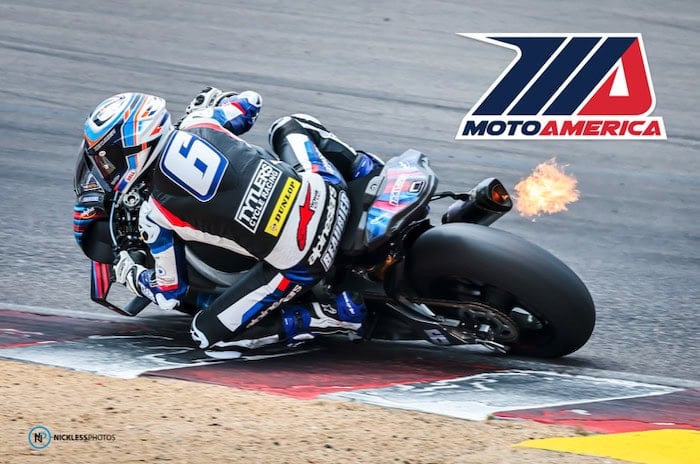The Motorcycle Racing Sport You Probably Know Little About
There’s no doubt in anyone’s mind that motorcycles have played a major role in America’s transportation history, and her pastimes. We’re well aware of Harley-Davidson, Indian Motorcycle, Triumph and Royal Enfield’s history as being some of the first motorcycle manufacturers. Growing up, you may have messed around on dirt bikes as a kid, thrashed the occasional three-wheeler, or even caught a few AMA or MotoGP races on television.
But have you heard of motorcycle ice racing? According to the Fédération Internationale de Motocyclisme (FIM), the global governing and sanctioning body of motorcycle racing, the first record of ice racing is from Sweden in 1924. And as did many aspects of our American history, the sport of motorcycle ice racing made its way across the pond by the late 1950’s. Ron Brefka, AMA Chartered Grand Championship Race Promoter & Founder of the High Voltage Motorcycle Show & Races, told me, “The ‘Golden Age’ of ice racing in Wisconsin was the 1970s and 1980s. When I was young, I watched motorcycle ice racing at my neighborhood park right in the middle of the city of Milwaukee, at Wilson Park.” In talking with Ron, he really made it appear as though ice racing was a very normal, natural activity. Instead of sitting around all winter waiting to ride, midwestern motorcyclists simply bundled up, got out on the lake, and had a blast.
Does it look cold? Yes, it was cold. Very cold.
Although ice racing has certainly become a popular sport for motorcyclists up here in the Midwest, it’s definitely one that deserves more coverage and appreciation within the wider powersport community. Personally, I’ve lived in Milwaukee for 5 years now and only recently even heard of it. It’s one of those situations that unless you know someone that’s racing, you probably won’t find out much about it. In fact, it wasn’t until the 2021 High Voltage AMA Ice Racing Grand Championship on Sunday, February 21st that I actually got to experience my first live ice race. And let me tell you, I’ll definitely be making appearances at next year’s ice races.
Before I get into explaining the sport of ice racing and all of its intricacies, I’d like to plug two charitable organizations that played a major part in putting on the races, the High Voltage Motorcycle Show & Races & The Steel Shoe Fund. High Voltage is an organization that raises money for cancer research with an emphasis on pancreatic cancer through the We Care Fund via the Medical College of Wisconsin. The Steel Shoe Fund is an organization that assists flat track motorcycle racers who have been seriously injured during AMA competitions.
These guys are nuts. I like it!
So now that you’re hopefully considering making a charitable donation to either of these fine organizations, let’s discuss the races! Most ice racing is held on a small oval track laid out on a frozen lake (obviously) and the race heats are completed rather rapidly. Short, fast, and furious. And cold. Surface ice must be at least 16” thick, and ambient temps run from the 20s F-lower. The race I actually attended was an AMA-sanctioned 3-hour endurance race across a 6-mile track (laid out by Jeff Fredette) spanning the entirety of Kettle Moraine Lake in Osceola, Wisconsin.
Each bike’s number plate contains an RFID chip and as the bike and rider passes through the Start/Finish checkpoint at the end of each lap, their lap is recorded. At the end of the race, the rider(s) and team with the most laps in the three-hour time span claims the podium. Race teams consist of one motorcycle, but each bike can have multiple racers. As you can imagine, 3 hours on a dirt bike over a frozen lake in these conditions would make even the youngest, most spry racers significantly sore and cold. While many teams split up the race into two legs with each racer riding for about an hour and a half straight, switching half way through in the pits, a mighty few opted to complete the Ironman Race solo class. Tough souls!
The course gets scraped frequently, even during races. Riders weave around or wait in trail, until the truck exits the track.
What makes an ice racing motorcycle different from a typical motocross machine? To start, in order to comply with AMA Ice Racing regulations, each tire is outfitted with 600 AMA approved racing screws, which are essentially sheet metal screws with a much deeper cut to provide better on-ice traction. Moving past the screws, racers are required to install a front and rear extended fender to prevent body parts from getting caught by the bike tire during a crash, or screws flying loose and shredding riders. As you can imagine, a tire with 600 sheet metal screws coming into contact with human flesh would act as quite the meat grinder, to put it mildly. On top of the fenders, racers are also required to have a tether on their bike which shuts off the motor in the event of a crash.
In speaking with some of the racers, I was told the ice racing bikes have so much traction that if there is no tether equipped, even after a racer falls off, bikes will oftentimes stand up on their own, continuing straight down their path. Other common modifications/amenities outfitted on bikes and riders include larger or secondary auxiliary fuel tanks, thick handlebar mitts and heaters, heated snowmobile gear, and for the lucky few with deeper pockets… upgraded suspension. For a more detailed look at an ice racing bike, check out this video where I interviewed AMA National Champ Ian Malinowski and captured some live race action! Watch it here without even leaving my story:

Overall, I was thoroughly impressed by the sport of ice racing and could certainly see myself getting more involved next year. For midwestern motorcyclists like myself, mid-winter motorcycle riding withdrawals are VERY real and ice racing certainly seems like a thrilling way to slake that desire. What do you think about ice racing? Have you ever attended or witnessed an ice race? Would you try it? Let us know in the comments below!
Nathan “GenZ Biker” Baron
Check out Nathan’s personal YouTube channel here.
Couldn’t resist a few more, including the Steel Shoe Fund trophy.




































It is so thrilling to watch! Can’t imagine how much more thrilling it feels to be in the race! As a Southern California native, I give major kudos to ice track racers braving those freezing temps. And for a wonderful cause! Love it all.
Agreed! Being a “Deep South” native, I don’t think my thin blood could take it. But sure is thrilling to watch.